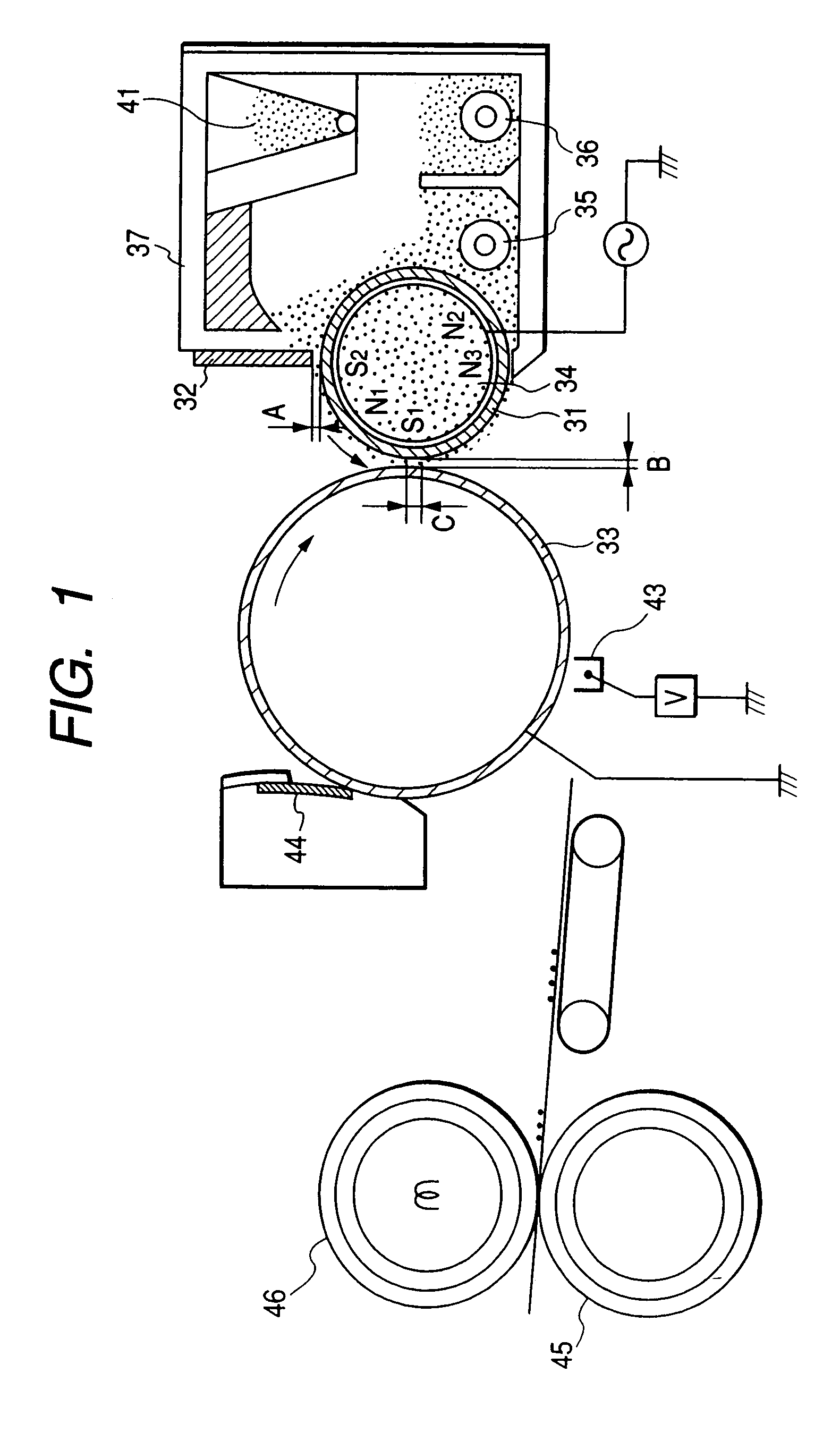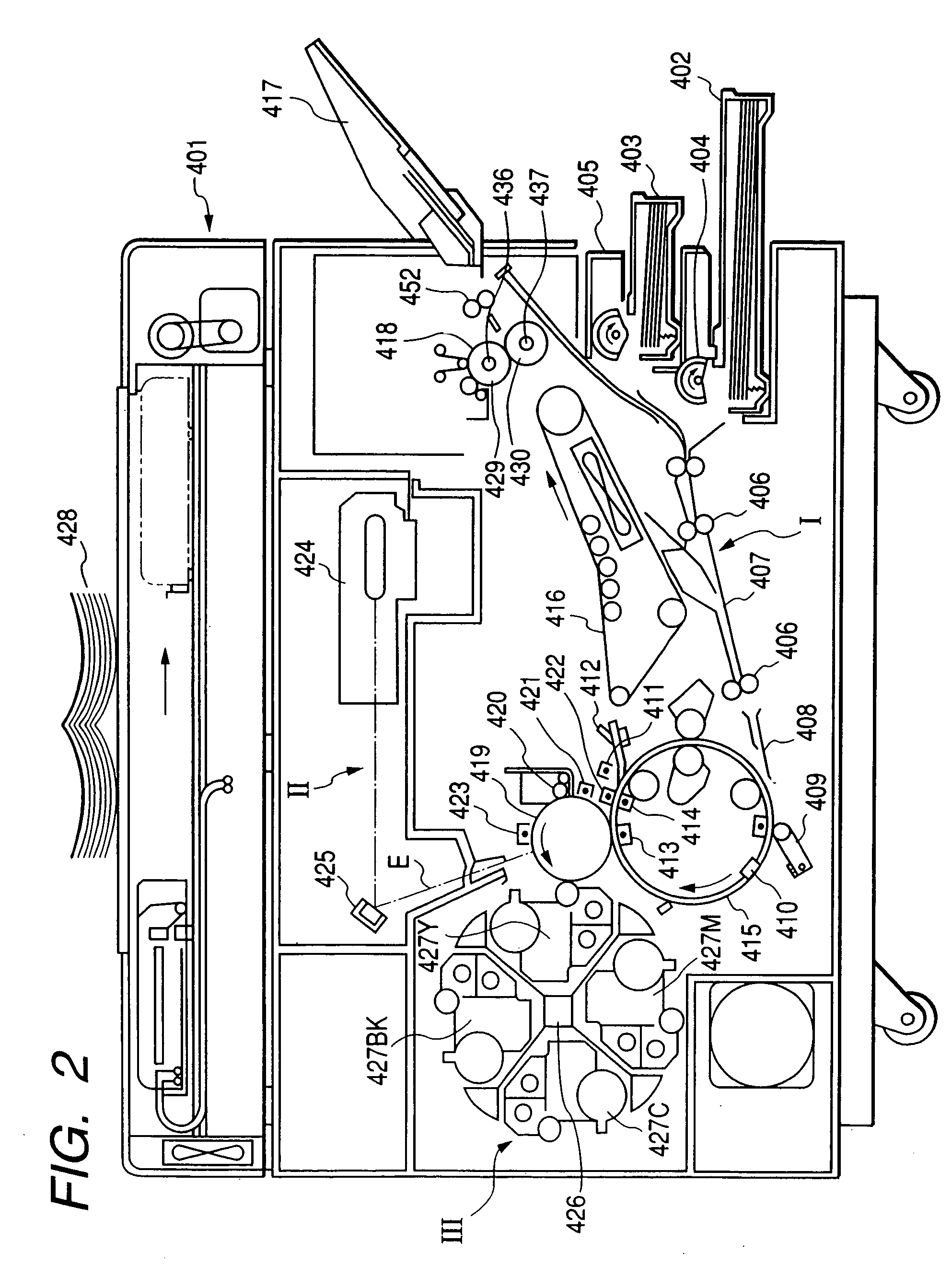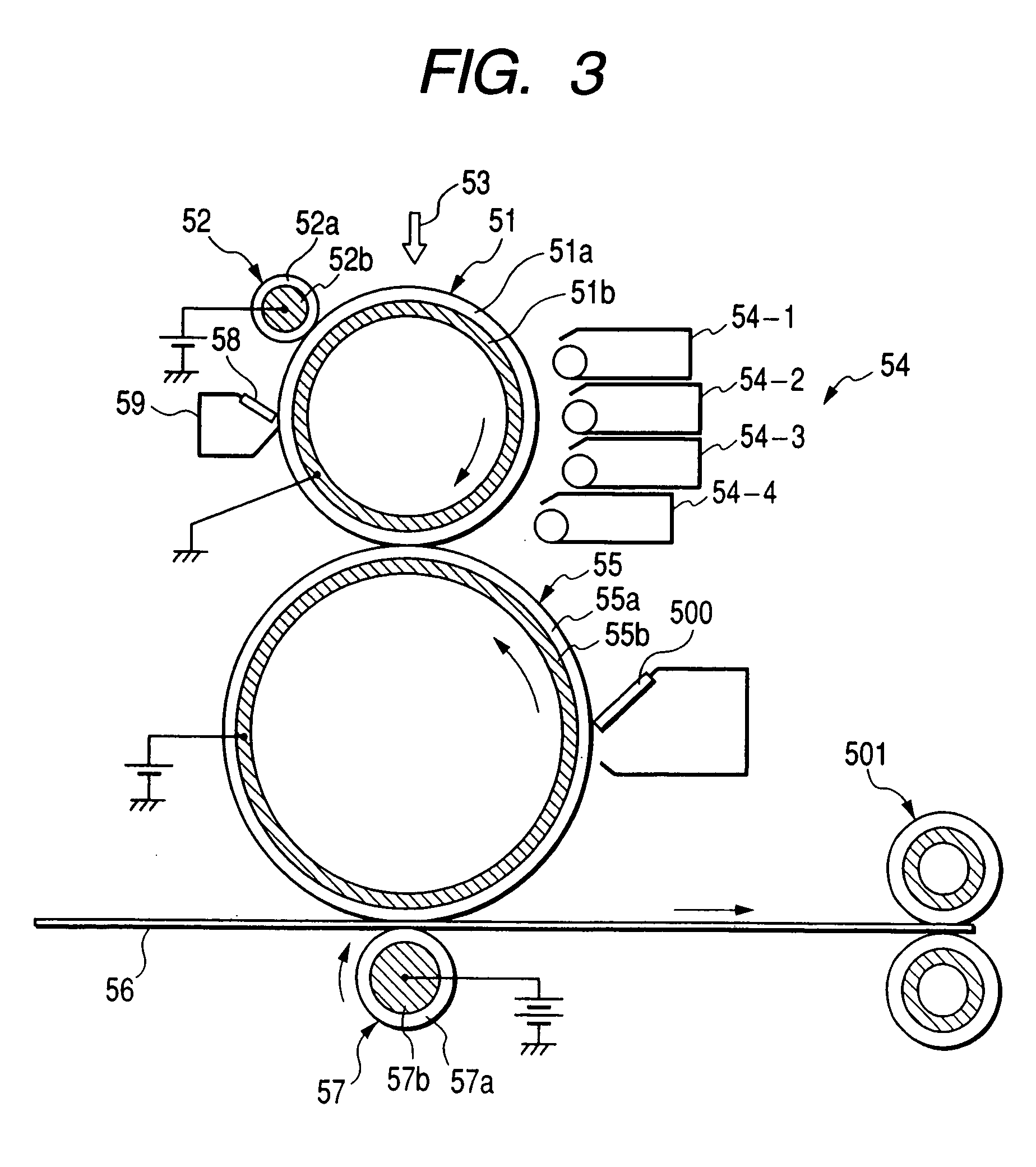Process for producing toner particles, and toner
a technology applied in the field of toner particles and toner production, can solve the problems of inferior transfer increase, insufficient effect, and increase in toner quantity, and achieve the effects of high quality, high transfer efficiency and anti-fogging properties, and superior charging stability
- Summary
- Abstract
- Description
- Claims
- Application Information
AI Technical Summary
Benefits of technology
Problems solved by technology
Method used
Image
Examples
example 1
[0242]An aqueous dispersion medium and a polymerizable monomer composition were each prepared in the following way.
[0243]Preparation of Aqueous Dispersion Medium:
[0244]To 900 parts of ion-exchange water, 3 parts of tricalcium phosphate was added, followed by stirring at 10,000 rpm by means of a TK-type homomixer (manufactured by Tokushu Kika Kogyo Co., Ltd.) to prepare an aqueous medium.
[0245]Materials formulated as described below were heated to 60° C., and then uniformly dissolved or dispersed at 9,000 rpm by means of a TK-type homomixer (manufactured by Tokushu Kika Kogyo Co., Ltd.) to prepare a polymerizable monomer composition.
[0246]
Styrene150partsn-Butyl acrylate50partsColorant (C.I. Pigment Blue 15:3)16partsPolar Polymer 14partsSaturated polyester resin20parts(a polycondensation product of propylene oxide modifiedbisphenol A and isophthalic acid; Tg: 65° C.; Mw: 10,000)Stearyl stearate wax (DSC peak: 60° C.)30partsDivinylbenzene0.6part
[0247]To this composition, 4 parts of a p...
examples 2 to 4
[0252]The colorant used in Example 1 was changed for C.I. Pigment Yellow 180, C.I. Pigment Red 122 and carbon black (PRINTEX L, available from Degussa Corp.), respectively, and the procedure of Example 1 was repeated to produce Yellow Toner 2, Magenta Toner 3 and Black Toner 4.
[0253]Physical properties of the toner are shown in Table 1, and the evaluation results are shown in Tables 2 to 5.
[0254]In addition, during the polymerization reaction, the pressure in the reaction system was controlled, or tert-butyl alcohol was added as needed, whereby the alcohol concentration in the aqueous medium was controlled to be the values shown in Table 1 respectively when the polymerization conversion was 30% and when the polymerization conversion was 97%.
example 5
[0255](Production of Hydrophobic Iron Oxide 1)
[0256]In a ferrous sulfate aqueous solution, a sodium hydroxide solution was mixed in an equivalent weight of from 1.0 to 1.1 based on iron ions, to prepare an aqueous solution containing ferrous hydroxide.
[0257]Maintaining pH of the aqueous solution at about 9, air was blown to effect oxidation reaction at 80 to 90° C. to prepare a slurry fluid from which seed crystals were to be formed.
[0258]Subsequently, to this slurry fluid, an aqueous ferrous sulfate solution was so added as to be in an equivalent weight of from 0.9 to 1.2 based on the initial alkali content (the sodium component in the sodium hydroxide). Thereafter, pH of the slurry fluid was maintained at about 8, and oxidation reaction was carried on while air was blown. After the oxidation reaction, magnetic iron oxide particles thus formed were washed, filtered and then taken out once. Here, a water-containing sample was collected in a small quantity, and its water content was ...
PUM
| Property | Measurement | Unit |
|---|---|---|
| half-life period temperature | aaaaa | aaaaa |
| circularity | aaaaa | aaaaa |
| circularity | aaaaa | aaaaa |
Abstract
Description
Claims
Application Information
 Login to View More
Login to View More - R&D
- Intellectual Property
- Life Sciences
- Materials
- Tech Scout
- Unparalleled Data Quality
- Higher Quality Content
- 60% Fewer Hallucinations
Browse by: Latest US Patents, China's latest patents, Technical Efficacy Thesaurus, Application Domain, Technology Topic, Popular Technical Reports.
© 2025 PatSnap. All rights reserved.Legal|Privacy policy|Modern Slavery Act Transparency Statement|Sitemap|About US| Contact US: help@patsnap.com



